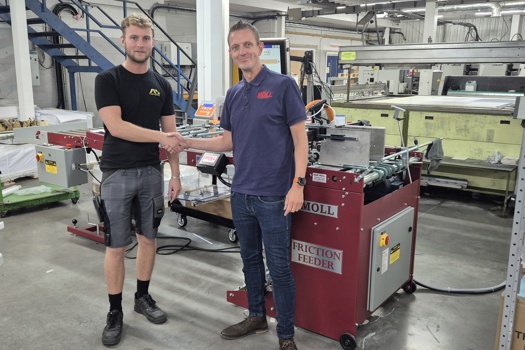Trying to follow the paper trail

Supply and demand issues are forcing paper prices upwards and there is no sign of a solution. Helen Morris investigates where the problems are occuring and whether they can be mitigated
Look beyond the surreptitious semantics of the government’s policy speak and you can see the basic principles of its recovery plan: earn less and pay more. While for many the impact of this will come as a shock, for the print sector it is something to which they have become accustomed, particularly when it comes to procuring paper.
Paper price rises came thick and fast in the first half of 2010, while annual rises are becoming all too predictable. As a result, printers are faced with a stark choice: absorb price increases or pass them on.
Most printers have been forced to do the latter, having to run the risk of losing customers. When you look at the figures, you can see they have had little choice. A recent printweek.com poll found that 40% of printers have been paying between 11%-20% extra for coated paper over the past 12 months, while 34% said the cost had increased by more than 20%.
It’s not just a matter of raw materials getting pricier – global events have also had an impact. For starters, the strike by Swedish dock workers on 4 March paralysed the export trade of a country responsible for producing around 4% of the world’s pulp. This was followed in April by a 10-day strike in Sweden by around 3,000 paper mill workers at a cost to the industry of around €50m (£42m).
Perhaps the biggest impact, however, was February’s earthquake in Chile. The country produces around 8% of the world’s pulp and production was completely halted as a result of the disaster, with an inevitable knock-on effect on supply.
It was this supply issue that Sappi Fine Paper Europe argued was at the root of its second price increase at the start of this month, saying the first price rise "had barely compensated for the extraordinary increase in pulp costs" as a result of the earthquake.
Multiple factors
While the earthquake didn’t help matters, it is by no means the only reason there is a "vastly diminished" global stock of pulp, says Mike Gee, managing director of Denmaur Independent Papers and president of the National Association of Paper Merchants (NAPM).
"The other thing becoming more evident is that the consumption of paper is still rising in other markets outside of western Europe and this has put further strain on world supplies in terms of the mills and their profitability," he says.
He adds that, earlier in the year, buyers in the South East Asia were purchasing large stocks of pulp and this increased pressure in the supply chain.
Kieran Ferguson, commercial director at carton and graphical board merchant Warren Board, believes that the close proximity of the multiple events was bound to knock confidence in the sector. "It highlighted the fine line between supply and demand within Europe," he says.
Wider issues
He adds that a number of mills and machines have closed in the graphical board market, with the slack not just taken up by the remaining European manufacturers, but also by mills in Asia and South America. This is causing problems due to the non-European manufacturers pulling out of UK markets due to currency and supply issues.
"With a large proportion of the non-domestic mills being purchasers of market pulp, they’re extremely vulnerable to supply issues," Ferguson claims. "In addition, these non-domestic mills trade predominantly in US dollars and with this currency strengthening, it has put greater pressure on price levels for these mills. As a result, many have withdrawn from the UK market or have severely cut their tonnage coming into it."
All of this has led to greater demand being placed upon domestic mills, to the extent that lead times are now well into the back end of 2010 or even early 2011.
The natural order dictates that when something is difficult to get hold of, its value increases and paper is no different. Prices are rocketing, but Robert Horne Group marketing director Philippa Charlton says every effort is being made to mitigate the price increases.
"We are working with our suppliers in an effort to keep any price rises to a minimum, but there is undoubtedly continued pressure from the mills to pass on their soaring manufacturing costs," she says.
It’s like BP’s efforts to cap the oil leak in the Gulf of Mexico. Sure, you can stick a plaster on it, but bubbling beneath the surface the pressure is rising. There is a feeling in the paper sector that the same thing is happening – the plaster is just hiding the inevitable, or even making the situation worse, so that the eventual rises will be a bigger and unexpected, whereas planned incremental rises may be more manageable.
Certainly, the situation does not look like resolving itself any time soon. NAPM director Tim Bowler says his members were hoping for signs of recovery and so the continued decline has been very disappointing. UK paper manufacturers he has visited recently have talked of pulp prices nearly doubling in the past six months.
The problem has been put into statistical format by Antalis McNaughton, who in an effort to explain their own price increases, prepared a report for their customers on the situation in the sector. It claims there has been a significant year-on-year decline in paper volumes in all countries and that the economic downturn has resulted in an 11% reduction in UK paper consumption.
It goes on to reveal that – somewhat surprisingly given the issues above – the average price of all papers sold by merchants in the UK was just 3.29% higher in February 2010 than it was in February 2003. For coated sheets, it says the figure is only 2% higher over the same period. The merchant compared these figures to the retail price index, which the report says went up 17% in the same period, meaning, in real terms, the price of paper has actually fallen.
The numbers may well be right, but to a printing company they are largely irrelevant. Any increase, no matter how relative, cuts into margins and heaps on more pressure at a time when things are pretty intense already.
Fortunately, the merchants appear to have better news. Antalis McNaughton says it has had "no formal indication of further price increases" in 2010 from its suppliers. Warren Board’s Ferguson adds that currently, they are "unlikely to see further increases on recycled board grades". However, he adds: "With lengthening lead times and pulp costs nearly at an all-time high, we may see further upward movement in virgin fibre".
The message from Robert Horne is bleaker, but arguably more realistic. Mark Gilbert, divisional director for commercial print at Robert Horne, says that the cycle of tight supply and rising pulp prices is still moving in the wrong direction.
"Consequently, we could find ourselves under pressure from manufacturers for further increases, possibly in the autumn."
Denmaur’s Gee is a little more optimistic, suggesting there may be a little easing of the supply issues in the last quarter of the year. He adds that the type of paper required will also determine prices, with wood-free papers always more prone to sharp rises in raw material costs than mechanical papers.
Part of life
Like it or not, price rises and supply issues will continue to be part of every printer’s life when it comes to paper and, like any chronic problem, coping strategies are crucial.
Ferguson says that with demand for stock and mill lead times at unprecedented levels, printers should liaise with their end-users to discuss short-term requirements and also their medium- and long-term needs. He says printers can then work with merchants to identify stock options going forward. "It’s unlikely that prices could be fixed for any longer than one quarter," he says.
A spokeswoman for Antalis McNaughton says that printers need to ensure they put their prices up and talk through the reasons behind the increase with their customers.
"They need to ensure that their sales staff are briefed also to pass on increases," she says. "Printers need to use the knowledge of their merchant – discuss using the right paper for the job and papers that use less ink, advise bulk orders, gather market information about the increase to present."
Second guessing
Alasdair Browne, director of Abbot Print, says those tied into contracts to print a particular product over a period of time need to have put in place a caveat that says they can pass on the cost of a paper increase.
"Those that have not got this, or are unable to make their customer appreciate this, are going to suffer. We price a job and re-estimate it when it comes up for a repeat."
He adds that the price rises will continue and that printers could help the mills to pass the costs on.
According to Gee, Denmaur sits down with its print and publishing customers to try and get fixed price arrangements for a period and sometimes these negotiations involve tripartite discussions.
"While the printers at the moment are questioning the mills’ loyalty to some of their business, history has shown that some buyers have been quite fickle, moving between one supplier and another for fairly small savings," he says. "As with many things in business, the foundation of the best relationships, particularly in this environment, are good communications between all the partners in the supply chain, with a background that everyone has to have some profit if we are all to survive and thrive in the future."
The lesson is clear. A problem in one area has a knock-on effect on the rest and so communication is key. Prices will inevitably go up again, but working together to share the burden and prevent a single sector collapsing under the full weight alone can ensure the survival of all.









